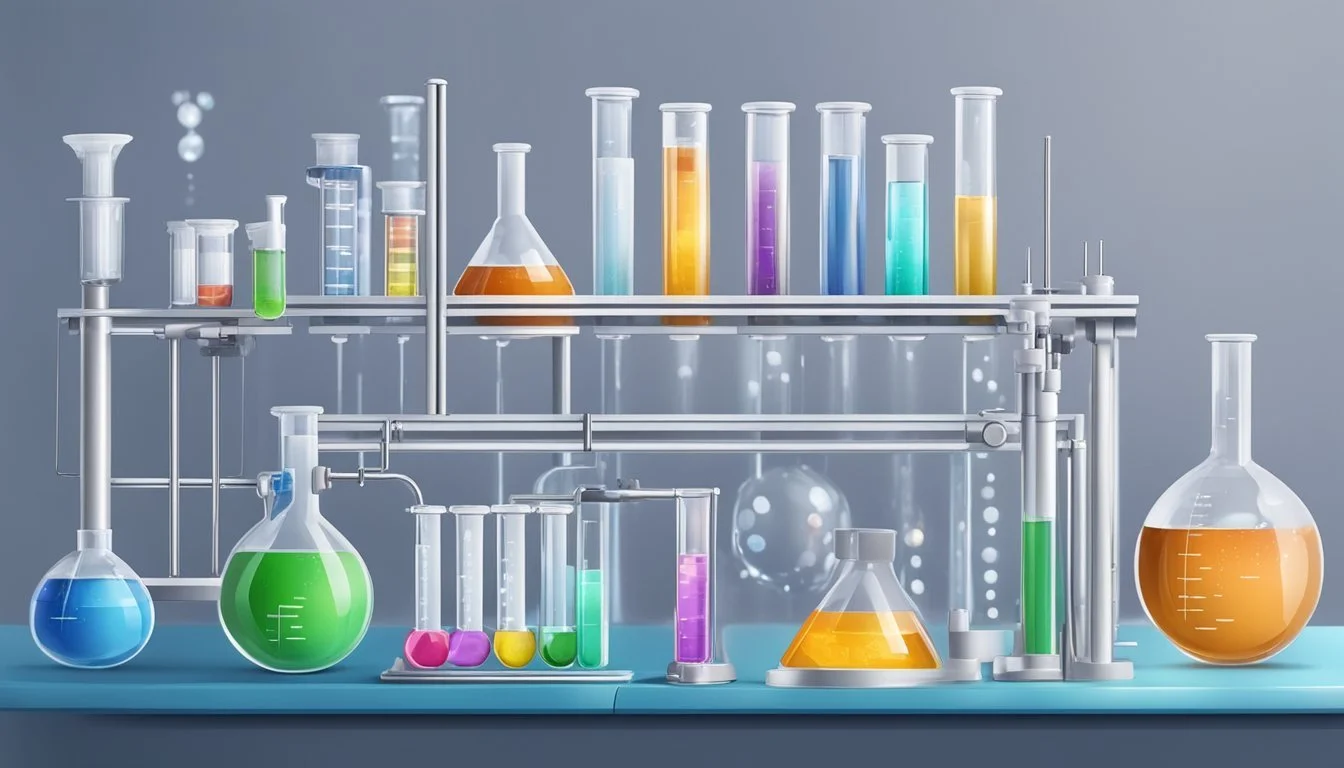Are MSG and Other Flavor Enhancers Safe?
Unveiling Facts and Myths
Monosodium glutamate (MSG) is a common flavor enhancer that has been utilized in food preparation and the food industry for over a century. As a food additive, MSG is derived from an amino acid called glutamic acid, which occurs naturally in various foods like tomatoes, cheese, and mushrooms. Its primary role is to enhance the umami taste, which is one of the five basic tastes, recognized for imparting a savory flavor to dishes. The safety of MSG has been endorsed by the U.S. Food and Drug Administration, which categorizes it as a substance that is generally recognized as safe.
Despite this official stance, the use of MSG in food continues to evoke discussions and debates over its health effects. Concerns have been raised about possible health issues, including headaches and allergic reactions, which some individuals have reported after consuming foods containing MSG. However, numerous scientific studies have investigated these claims, and there has been no consistent evidence to support a link between MSG and the reported symptoms.
Overall, the conversation about flavor enhancers like MSG involves balancing the benefits of taste enhancement in food against the need to address and understand consumer health concerns. It is important to note that MSG occurs naturally in foods that are part of a regular diet, and as with many food additives, moderation is key. Whether the use of additional MSG in foods poses any significant health risks remains a subject of ongoing research and scientific inquiry.
Chemical Composition of MSG
Monosodium glutamate, commonly referred to as MSG, is a compound that features a specific amino acid attached to a sodium molecule. It plays a significant role as a flavor enhancer in various cuisines by capitalizing on its umami taste.
Amino Acid Structure
MSG is composed of an amino acid known as L-glutamic acid, which is one of the non-essential amino acids. This means that the human body can synthesize it and it does not need to be obtained exclusively through diet. In MSG, the L-glutamic acid is in its sodium salt form, which contributes to its flavor-enhancing properties. Amino acids, in general, are the building blocks of proteins, and glutamic acid is prevalent in many protein-rich foods.
Chemical formula of MSG: C5H8NNaO4
Molecular weight: 169.11 g/mol
Glutamic Acid and Glutamate Difference
The terms glutamic acid and glutamate refer to the same amino acid but differ mainly in the chemical structure based on pH levels.
Glutamic acid: This is the name given to the molecule in its acidic form.
Glutamate: Refers to the anion that forms when glutamic acid loses a hydrogen ion (proton) from its side chain carboxyl group in a higher pH environment, such as in many foods or inside the human body.
In the structure of MSG, the glutamic acid is in the form of glutamate, bound to a single sodium ion, which enhances its solubility and function as a flavor enhancer.
Historical Context and Usage
Monosodium glutamate (MSG), a widely recognized flavor enhancer, has been a significant subject of culinary and scientific interest due to its ability to impart the unique umami taste. The following subsections explore its discovery, cultural influence, and global distribution.
Discovery and Cultural Adoption
In 1908, Professor Kikunae Ikeda of the Imperial University of Tokyo identified the compound responsible for the savoriness in certain foods like seaweed broth. Naming this flavor umami, he subsequently patented the method to produce MSG. Ikeda's work unveiled a flavor cornerstone, much like sweet, sour, salty, and bitter, and paved the way for MSG's culinary adoption, particularly in Asia.
Prevalence in Asian Cuisine
MSG and the umami flavor are intrinsically linked with Asian cuisine, owing to the long tradition of using naturally umami-rich ingredients such as soy sauce and fermented foods. MSG's ability to enhance this desirable taste saw its incorporation into a multitude of Asian dishes, reinforcing the umami profile that defines many regional gastronomies.
Global Spread and Adaptation
The use of MSG expanded rapidly as it moved beyond Asia, driven by the globalization of food products and the growing awareness of umami as a foundational taste. Industries worldwide began integrating MSG as a flavor enhancer to simulate the complexity of umami, mirroring techniques long employed in Asian cooking. Today, MSG is prevalent across global cuisines, found in everything from snacks to fine dining experiences.
MSG in the Diet
Monosodium glutamate, known as MSG, is a flavor enhancer prevalent in various foods that are often part of a typical diet, with a notable presence in processed foods and restaurant meals. Its safety has been recognized by the FDA, although it remains subject to ongoing debate among consumers and health professionals alike.
Common Foods Containing MSG
MSG is found in a wide range of foods we encounter daily. Below is a list of typical food categories that frequently contain MSG:
Processed Foods:
Frozen meals
Snacks like flavored potato chips
Processed meats such as sausages and deli meats
Soups and Sauces:
Canned soups
Pre-made stock and bouillon
Condiments and salad dressings
Others:
Certain fast food items
Ready-to-eat meals from restaurants
Selected packaged snacks
These items incorporate MSG either to intensify their intrinsic flavors or to compensate for flavor loss during processing. It's important for consumers to read labels if they desire to manage their intake.
Dietary Intake Assessment
Evaluating one's consumption of MSG involves considering both naturally occurring and additive forms. Nutritionists often suggest the following steps:
Review Food Labels: Look for MSG or its various names, including monosodium glutamate, glutamic acid, or hydrolyzed protein.
Consider Food Sources: Note that certain foods like tomatoes, cheese, and mushrooms naturally contain high levels of glutamate.
Evaluate Frequency: How often and how much one indulges in fast food, snacks, or frozen meals can be an indicator of MSG intake levels.
Awareness of MSG's presence in certain favored foods can enable individuals to make more informed dietary choices.
Health and Safety Evaluations
The safety of monosodium glutamate (MSG) and other flavor enhancers has been a subject of scientific research and regulatory review. Of particular interest is the designation of substances by the FDA as "Generally Recognized as Safe" (GRAS) and the specific findings concerning MSG's safety profile regarding obesity, sodium intake, and its role as a neurotransmitter.
FDA Stance on MSG
The Food and Drug Administration (FDA) has conducted assessments of MSG, a common flavor enhancer. The agency acknowledges that MSG is a derived form of a naturally occurring amino acid, glutamic acid, which also serves as a neurotransmitter in the human body. The FDA has listed MSG under substances that are "Generally Recognized as Safe" (GRAS), affirming its safety for consumption in normal quantities based on expert consensus and extensive research.
'Generally Recognized as Safe' (GRAS) Status
An ingredient achieves GRAS status when qualified experts determine through scientific data that the substance is safe under the conditions of its intended use. The GRAS classification means that it is not subject to pre-market review and approval by the FDA. This status is determined by the collective body of evidence available at the time, including scientific analyses, publications, and the experience of its use.
Scientific Research on MSG Safety
Researchers have conducted numerous studies to evaluate the health effects of MSG consumption. Their findings show that, when consumed at levels typically found in foods, MSG does not contribute to obesity nor does it independently affect human health negatively. These evaluations note that MSG has been part of the human diet for decades without consistent evidence linking its consumption to specific health risks. However, it is recommended that, as with sodium intake from other sources, individuals should consume MSG in moderation.
Sensory Influence and Flavor Enhancement
Monosodium glutamate (MSG) is widely recognized for its ability to enhance the sensory appeal of foods by imparting the umami taste and improving overall palatability.
The Fifth Taste: Umami
Umami is acknowledged as one of the five basic tastes, alongside sweet, sour, bitter, and salty. It is described as a savory flavor and is a signature quality imparted by MSG. The umami taste is primarily due to glutamate, an amino acid that's naturally present in various foods such as tomatoes, cheese, and meat.
Foods Naturally Rich in Umami:
Tomatoes
Parmesan cheese
Mushrooms
Seaweed
Meat broths
MSG functions as a flavor enhancer by augmenting this desirable savory quality in foods. When added to dishes, it provides a depth of flavor without altering the original taste profile.
Enhancing Palatability and Taste
The use of MSG and other flavor enhancers plays a pivotal role in increasing food palatability. They work by not just adding their own taste but also by complementing and intensifying the existing flavors in the food. MSG, in particular, has two notable effects: it imparts umami and serves to make food more enjoyable by enhancing flavor. This dual action can affect consumer preference and can even reduce the need for added salt, as umami provides a satisfying depth to the taste experience.
Methods of Enhancing Taste with MSG:
Combining with other ingredients to amplify savory notes
Reducing salt content while maintaining taste satisfaction
Improving the balance of flavors in low-fat options
It is important to understand that MSG does not mask or disguise flavors but optimizes the taste experience by improving the overall sensory quality of food. Flavor enhancers, when used appropriately, contribute to the culinary enjoyment by making foods taste fuller and more complex.
Analysis of Common Myths
In exploring the controversies surrounding monosodium glutamate (MSG), it is crucial to differentiate between widespread myths and scientific evidence. This distinction is imperative when discussing the health implications associated with MSG.
Myth vs. Fact on MSG Health Risks
Myth: MSG is a significant cause of serious health issues and should be avoided at all costs.
Fact: The U.S. Food and Drug Administration (FDA) considers MSG safe for consumption, classifying it as a food ingredient "generally recognized as safe" (GRAS). Scientific studies have not consistently linked MSG with severe health effects.
Myth: Everyone who consumes MSG will experience adverse effects.
Fact: Only a subset of the population reports sensitivity to MSG. Those individuals might experience mild symptoms, but there is no conclusive evidence that MSG poses a risk to the general population.
Monosodium Glutamate Symptom Complex
Often referred to as "Chinese restaurant syndrome," the monosodium glutamate symptom complex encompasses symptoms like headaches, numbness, flushing, and palpitations. Here's a closer look:
Headaches and Migraines:
A common claim is that MSG causes severe headaches in many individuals.
Research shows that while a small percentage of people might get a headache after consuming large quantities of MSG, it's not a universal reaction.
Numbness, Tingling, and Flushing:
Some reports suggest that these symptoms may occur after MSG consumption in a condition named Chinese restaurant syndrome.
These reports are anecdotal, and large-scale studies have not found a direct, consistent link between MSG intake and such symptoms.
Heart Palpitations and Other Symptoms:
Cases of palpitations and short-term reactions have been reported by individuals with sensitivity to MSG.
However, symptoms are typically transient and have been challenged in scientific reviews for lack of rigorous evidence.
Dietary Concerns and Considerations
When considering the safety of MSG and other flavor enhancers, it's important to assess their impact on dietary sodium content and the potential for allergic reactions or sensitivities.
Sodium Content and Health
Monosodium glutamate (MSG) contributes to the sodium content of a diet, which is a critical factor for individuals monitoring their salt intake. The American Heart Association recommends no more than 2,300 milligrams of sodium per day, moving toward an ideal limit of 1,500 mg per day for most adults. An excess of sodium in the diet can lead to health issues such as high blood pressure, obesity, and increased risk of heart disease.
Blood Pressure: Excessive sodium intake from enhancers like MSG can contribute to hypertension.
Weight Gain: There is a correlation between high sodium diets and obesity due to increased retention of water and potential changes in metabolic function.
Allergic Reactions and MSG Sensitivity
While true allergies to MSG are rare, anecdotal reports suggest that some individuals may experience an MSG sensitivity, which is often referred to as the "Chinese Restaurant Syndrome." Symptoms of MSG sensitivity can include:
Headache
Flushing
Sweating
Nausea
However, the existence of a true MSG allergy has not been supported by scientific evidence, as comprehensive reviews have not found a consistent relationship between MSG and these symptoms. Nonetheless, awareness of food ingredients and individual reactions to them is important for maintaining a well-tolerated diet.
Labeling and Consumer Awareness
In the context of food additives like MSG, labeling is a critical element that informs consumers about what they're consuming. Both regulatory bodies and food manufacturers play significant roles in ensuring transparency through effective labeling practices.
Regulations on MSG Labeling
In the United States, the Food and Drug Administration (FDA) mandates that food products containing monosodium glutamate (MSG) must explicitly state the compound on their ingredient lists. Such regulations are designed to inform consumers about the presence of MSG in their food due to its debated health implications. While the FDA classifies MSG as "generally recognized as safe" (GRAS), the requirement for labeling helps consumers who may have sensitivities to the additive or who prefer to avoid it.
Notably, there are different terms under which MSG might be listed on labels, including:
Monosodium Glutamate
Glutamic Acid
Glutamate
Other flavor enhancers similar to MSG may also be listed such as:
Hydrolyzed Vegetable Protein
Yeast Extract
Autolyzed Yeast
Sodium Caseinate
How to Identify MSG in Food Products
MSG can be found in a variety of food products, from canned goods to restaurant meals. For consumers who wish to monitor their intake of MSG, identifying this additive in food products requires careful examination of ingredient labels.
Tips to identify MSG and similar flavor enhancers:
Look for "monosodium glutamate" specifically, which is the most straightforward indicator of MSG.
Check for other names that indicate the presence of MSG or similar compounds, including hydrolyzed plant proteins, yeast extract, and autolyzed yeast.
Be aware that certain products such as stock cubes, soup mixes, and seasoned snacks frequently contain MSG.
Understand that "natural flavor" or "flavoring" on labels can sometimes include MSG or related substances.
By being informed and attentive to labels, consumers can make knowledgeable choices about their consumption of MSG and other flavor enhancers.
The Future of MSG and Flavor Enhancers
The trajectory of monosodium glutamate (MSG) and other flavor enhancers is closely aligned with advancements in food technology and active research in food additives. The industry continues to evolve with a keen focus on safety, nutritional impact, and consumer preferences.
Innovations in Food Technology
In the realm of food technology, innovations are frequently geared towards enhancing flavor while ensuring safety and nutritional value. The refinement of MSG's production process is an ongoing endeavor, aiming to optimize its efficacy as a flavor enhancer. Research into the interaction of MSG with other nutrients and nucleotides is contributing to a deeper understanding of its role in the culinary experience. Scientists and food technologists are not only investigating the sensory aspects of MSG but also its metabolic footprint, ensuring that its use aligns with modern dietary guidelines.
Emerging Alternatives to MSG
As for alternatives to MSG, the industry is witnessing a growth in the development of natural flavor enhancers. These alternatives are derived from nutrient-rich sources, offering the umami experience without the synthetic attribute. This shift signifies an inclination towards additives that consumers can identify as 'clean label' ingredients—terms that relate to more easily understood and often plant-based components. Research is also focusing on leveraging food additives that have inherent flavor-enhancing properties, such as certain amino acids and nucleotides, that may complement or even replace traditional MSG in various food products.






